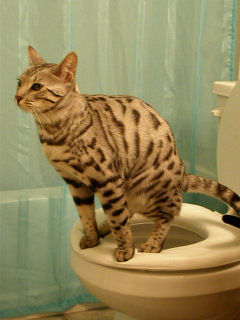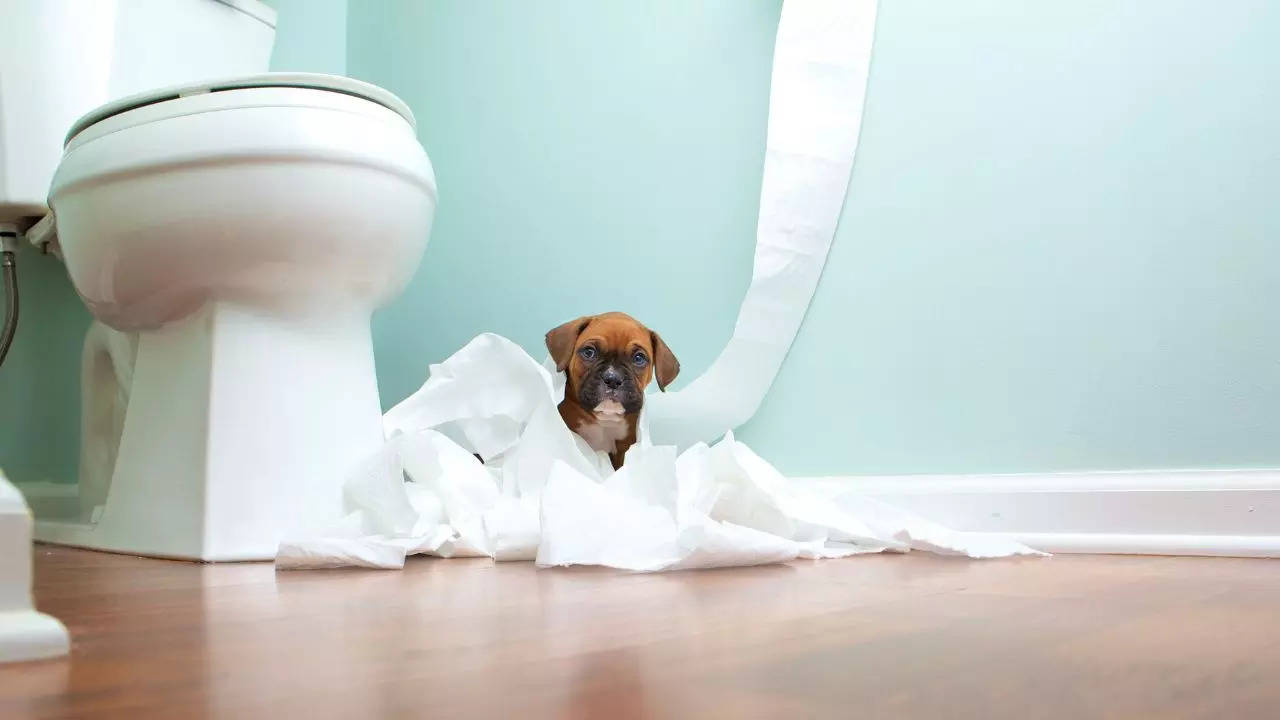Highly-Rated Motives to Refrain from Flushing Animal Waste Down the Toilet
Highly-Rated Motives to Refrain from Flushing Animal Waste Down the Toilet
Blog Article
Just about every person has got his or her own concepts on the subject of 10 Things You Should Never Flush Down The Toilet.

When it concerns throwing away waste, specifically animal waste, many people frequently turn to the hassle-free choice of flushing it down the toilet. However, this seemingly very easy solution can have severe repercussions for the environment and public health. In this post, we'll check out why flushing pet waste down the bathroom is a poor idea and provide alternate approaches for correct disposal.
Introduction
Appropriate garbage disposal is crucial for preserving ecological sustainability and public health. While it may seem safe to flush animal waste down the toilet, it can result in various concerns, both for the environment and human well-being.
Dangers of flushing pet waste
Environmental impact
Purging animal waste presents hazardous microorganisms and pathogens into waterways, which can negatively affect aquatic ecosystems. These microorganisms can infect water sources and damage marine life, interrupting fragile environments.
Public health concerns
Pet waste contains damaging microorganisms such as E. coli and Salmonella, which can pose severe wellness threats to people. Purging pet waste down the commode can pollute water materials, bring about the spread of illness and infections.
Alternatives to flushing
As opposed to purging pet waste down the bathroom, there are numerous alternative disposal approaches that are a lot more environmentally friendly and hygienic.
Composting
Composting animal waste is an environmentally friendly way to deal with it. By composting, organic matter is broken down into nutrient-rich soil, which can be used to fertilize yards and plants.
Landfill disposal
Taking care of animal waste in a land fill is one more alternative. While not as environmentally friendly as composting, it is a safer option to flushing, as it prevents the contamination of water resources.
Animal garbage disposal systems
There are customized animal waste disposal systems readily available that safely and hygienically deal with animal waste. These systems often utilize enzymes to break down waste and eliminate smells.
Actions to proper pet garbage disposal
To guarantee proper disposal of pet waste, comply with these actions:
Scooping and nabbing waste
Frequently scoop and bag animal waste utilizing naturally degradable bags. This avoids waste from contaminating the setting.
Using designated waste containers
Dispose of bagged animal waste in assigned waste bins, such as compost containers or land fill containers. Avoid flushing it down the commode at all prices.
Cleansing can and pet areas frequently
Regularly clean litter boxes and pet areas to avoid the accumulation of waste and germs. Use pet-safe cleansing products to maintain health.
Advantages of proper disposal methods
Adopting correct disposal approaches for pet waste supplies numerous benefits:
Lowered environmental pollution
Correct disposal techniques minimize the threat of environmental pollution, safeguarding waterways and ecological communities from contamination
Minimized danger of water contamination.
By staying clear of flushing pet waste down the commode, the danger of water contamination is considerably minimized, protecting public health.
Enhanced hygiene and health
Appropriate disposal methods promote better cleanliness and health, producing a much safer environment for both human beings and pets.
Conclusion
In conclusion, flushing animal waste down the commode is dangerous to the setting and public health. By embracing alternate disposal methods and adhering to proper waste monitoring methods, we can lessen the adverse influence of animal waste and add to a cleaner, healthier earth.
Why You Should Never Flush Cat Poop Down the Toilet
A rose by any other name might smell as sweet, but not all poop is created equal. Toilets, and our sewage systems, are designed for human excrement, not animal waste. It might seem like it couldn’t hurt to toss cat feces into the loo, but it’s not a good idea to flush cat poop in the toilet.
First and foremost, assuming your cat uses a litter box, any waste is going to have litter on it. And even the smallest amount of litter can wreak havoc on plumbing.
Over time, small amounts build up, filling up your septic system. Most litter sold today is clumping; it is made from a type of clay that hardens when it gets wet. Ever tried to scrape old clumps from the bottom of a litter box? You know just how cement-hard it can get!
Now imagine just a small clump of that stuck in your pipes. A simple de-clogger like Drano isn’t going to cut it. And that means it’s going to cost you big time to fix it.
For an amusing, graphic tale of what happens when you flush too much litter down the toilet all at once, take a few minutes to read Gene Weingarten’s 2017 Washington Post column “So that’s what happens when you flush cat litter down the toilet.”
Parasitic Contamination
Believe it or not, your healthy kitty may be harboring a nasty parasite. Only cats excrete Toxoplasma in their feces. Yet it rarely causes serious health issues in the cats that are infected. Most people will be fine too if infected. Only pregnant women and people with compromised immune systems are at risk. (If you’ve ever heard how women who are expecting are excused from litter cleaning duty, Toxoplasma is why.)
But other animals may have a problem if infected with the parasite. And human water treatment systems aren’t designed to handle it. As a result, the systems don’t remove the parasite before discharging wastewater into local waterways. Fish, shellfish, and other marine life — otters in particular — are susceptible to toxoplasma. If exposed, most will end up with brain damage and many will die.
Depending on the species of fish, they may end up on someone’s fish hook and, ultimately on someone’s dinner plate. If that someone has a chronic illness, they’re at risk.
Skip the Toilet Training
We know there are folks out there who like to toilet train their cats. And we give them props, it takes a lot of work. But thanks to the toxoplasma, it’s not a good idea.
Leave the toilet to the humans, and accept your future litter cleaning duty.

Regularly clean litter boxes and pet areas to avoid the accumulation of waste and germs. Use pet-safe cleansing products to maintain health.
Advantages of proper disposal methods
Adopting correct disposal approaches for pet waste supplies numerous benefits:
Lowered environmental pollution
Correct disposal techniques minimize the threat of environmental pollution, safeguarding waterways and ecological communities from contamination
Minimized danger of water contamination.
By staying clear of flushing pet waste down the commode, the danger of water contamination is considerably minimized, protecting public health.
Enhanced hygiene and health
Appropriate disposal methods promote better cleanliness and health, producing a much safer environment for both human beings and pets.
Conclusion
In conclusion, flushing animal waste down the commode is dangerous to the setting and public health. By embracing alternate disposal methods and adhering to proper waste monitoring methods, we can lessen the adverse influence of animal waste and add to a cleaner, healthier earth.
Why You Should Never Flush Cat Poop Down the Toilet
A rose by any other name might smell as sweet, but not all poop is created equal. Toilets, and our sewage systems, are designed for human excrement, not animal waste. It might seem like it couldn’t hurt to toss cat feces into the loo, but it’s not a good idea to flush cat poop in the toilet.
First and foremost, assuming your cat uses a litter box, any waste is going to have litter on it. And even the smallest amount of litter can wreak havoc on plumbing.
Over time, small amounts build up, filling up your septic system. Most litter sold today is clumping; it is made from a type of clay that hardens when it gets wet. Ever tried to scrape old clumps from the bottom of a litter box? You know just how cement-hard it can get!
Now imagine just a small clump of that stuck in your pipes. A simple de-clogger like Drano isn’t going to cut it. And that means it’s going to cost you big time to fix it.
For an amusing, graphic tale of what happens when you flush too much litter down the toilet all at once, take a few minutes to read Gene Weingarten’s 2017 Washington Post column “So that’s what happens when you flush cat litter down the toilet.”
Parasitic Contamination
Believe it or not, your healthy kitty may be harboring a nasty parasite. Only cats excrete Toxoplasma in their feces. Yet it rarely causes serious health issues in the cats that are infected. Most people will be fine too if infected. Only pregnant women and people with compromised immune systems are at risk. (If you’ve ever heard how women who are expecting are excused from litter cleaning duty, Toxoplasma is why.)
But other animals may have a problem if infected with the parasite. And human water treatment systems aren’t designed to handle it. As a result, the systems don’t remove the parasite before discharging wastewater into local waterways. Fish, shellfish, and other marine life — otters in particular — are susceptible to toxoplasma. If exposed, most will end up with brain damage and many will die.
Depending on the species of fish, they may end up on someone’s fish hook and, ultimately on someone’s dinner plate. If that someone has a chronic illness, they’re at risk.
Skip the Toilet Training
We know there are folks out there who like to toilet train their cats. And we give them props, it takes a lot of work. But thanks to the toxoplasma, it’s not a good idea.
Leave the toilet to the humans, and accept your future litter cleaning duty.

As a fervent person who reads about 4 Reasons Why Dog Poop Cleanup is Important, I thought sharing that piece of content was beneficial. If you enjoyed our page plz do not forget to pass it around. I value reading our article about Why you should never flush dog poop down the toilet.
Visit Website Report this page